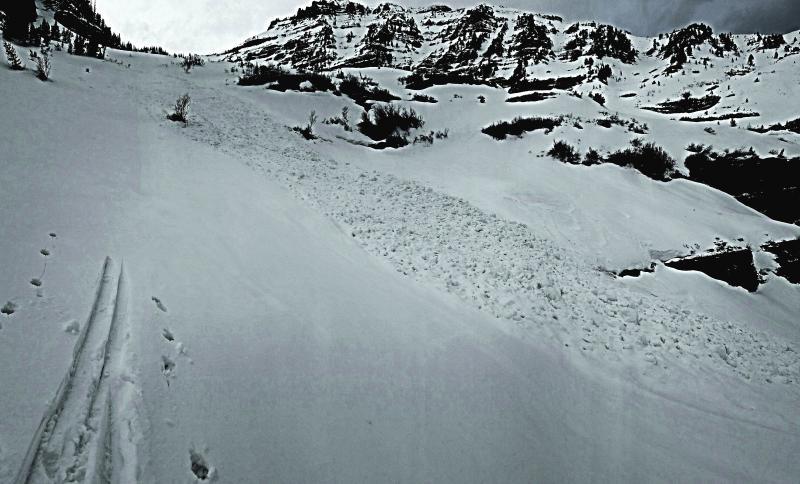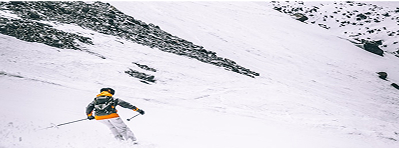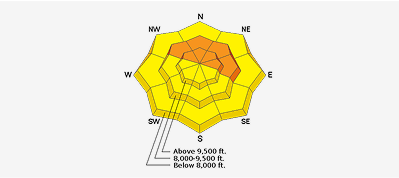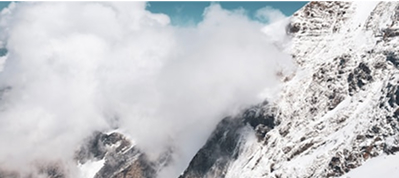Observation Date
4/8/2017
Observer Name
Joey Dempster
Region
Provo » Provo Canyon » Timpanogos » Primrose Cirque
Location Name or Route
Primrose Cirque
Comments
The photo below is one of the debris piles in Primrose that ran early Saturday morning. (Forecaster note: timing of these slides is unknown.) This one is significant because it was part of a larger avalanche that ran down from the high cliffs of east peak down towards the Falls Couloir. Normally, all of the debris gets channeled into the couloir. In 20 years of skiing in Primrose, I don't recall seeing this much of that path's flow diverted down into the small bowl to climber's right of the Falls Couloir (That's not to say it has never happened, just that it's not frequent enough for me to have noticed). I interpret this to mean that these types of avalanche paths are so deeply filled with debris that it is potentially causing debris flow that is out of the ordinary. So caution is warranted in areas that you might normally consider out of the runout zone for large avalanche paths.
It is difficult to say whether the weakness that caused this cycle Friday night into Saturday is still present, and could reload with new snow, or if it got washed out or perhaps cooled down enough that the new snow will not produce a similar cycle tomorrow. It would be prudent, I think, to assume that the weakness will persist and give these big paths a wide berth tomorrow.

Today's Observed Danger Rating
Moderate
Tomorrows Estimated Danger Rating
Moderate






